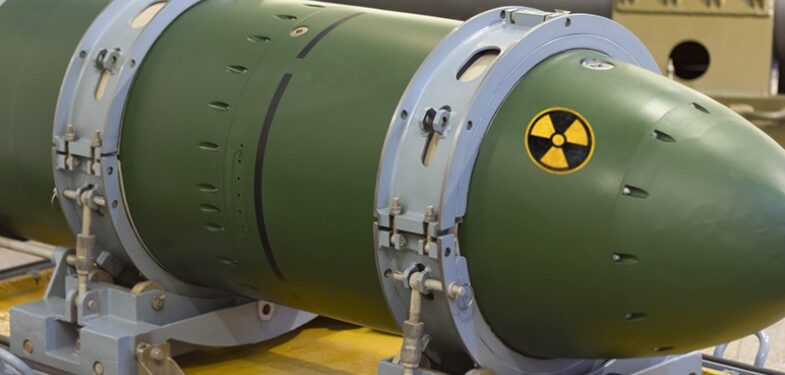The Persuader is a moniker that has been given to any number of weapons throughout history. And the billionaire known as Peter Conroy is determined to collect them all.
The appellation of said weapons began as a joke, as many serious things do, a long time ago. In Imperial China, a diplomat at the Emperor’s court witnessed the sovereign’s weaponsmith demonstrate a portable iron tube packed with black powder blast a mock formation of enemy soldiers, reducing them to little more than chunks of wood. The diplomat suggested The Persuader as a moniker, saying it would persuade a neighboring kingdom to see the error of its ways. The smith had wanted to call his new invention The Dragon’s Breath. However, the Emperor had laughed so heartily at the diplomat’s proposal that no one dared question the decision.
The earliest firearms were unreliable so, naturally, men still relied upon sword and spear. However, by the 15th century every soldier had come to fear the sound of cannon and gunfire and to be relieved by the one element that consistently spoiled them – rain. However, a starving artist, but brilliant engineer, was persuaded by the amber-eyed consigliere of the Duke of Milan to put his genius to work in developing a new firing mechanism that kept powder dry in the worst of conditions. Thus, when enemies of Milan attacked in in the rain, they were persuaded that this was no longer a winning strategy when met with volleys of gunfire. The consigliere pointed this out and his Duke found it as humorous as the old Emperor did. He christened the new firearm with the same moniker.
The name, The Persuader, began to take on a legend of its own, a name barked in fear and relief by soldiers when they saw the other side or their own mount such a weapon. The single explosions that announced its firing could make brave men tremble and weak men cry. Of course, it still only had the one argument, a simple if loud ‘bang,’ which took quite a long time to repeat.
Times of great violence, though, often lead to great innovation, and the conflicts between European settlers and the native peoples of North America were no exception. A group of scalp-hunters, about to setoff into Comanche territory, were intrigued by a local politician who drew their attention to a posting for a new firearm. This “revolver,” he said, would persuade any enemy to let off. Even the brutish bounty hunters knew the Comanche were clever and dangerous folk, having honed the tactics of firing many arrows while white men struggled to reload their single-shot rifles. Each man purchased this new Persuader and carried it for their expedition. Not far afield, the Comanche descended upon the slayers, hid amongst rocks and made noise, frightening the jittery killers into firing off their shot so they could descend and make short work of them. The Comanche were persuaded indeed when they found these fools had not one shot each, but many, as if the Devil’s right hand had multiplied their numbers.
At the advent of the first world war a man named John Moses attended an exposition when a visiting delegate said to him, “John, if you want to make a lot of money, you need to invent something that will enable these Europeans to cut each other’s throat with greater facility.” Seeing the money that every country was pouring into their armies, Moses followed the advice of this handsome stranger and created a man-portable machine gun. His weapons, all dubbed The Persuader in one form or another, made their way across five continents and two world wars, doing the talking for delegates and diplomats over decades and millions of corpses.
At the advent of each new weapon, whether with Mr. Moses or any of his successors, there was always a charming diplomat, delegate, or politician to suggest the name The Persuader. It was only during a European summit between wars when such a man spoke that he became the victim of violence himself.
When the man extolled war as a virtue, that it led to the best of technological advances, culled the weak from the population, brought forth the lion in leaders, Winston Churchill interrupted with, “To jaw, jaw is better than to war-war,” and demonstrated this by striking the diplomat. While many who read about this in the next day’s papers celebrated Churchill’s actions, the bulldog was voted out of office after his war ended.
Perhaps due his rude treatment by England, the same diplomat made his way to the Americas. There he befriended a young genius and assured him that only the overwhelming force of a new weapon would persuade the militaristic Japanese to surrender. This seed of an idea blossomed into an explosion so bright, destructive and dirty that the Japanese refused to believe their enemy could do it twice. So the Fat Man fell on Nagasaki and the Japanese surrendered, cowed by a new and terrible weapon.
There were three such weapons, not two as the history books would say, and the last (inert) version ended in the collection of Peter Conroy. The billionaire used it as an example of crude and dangerous weapons, tirelessly lobbying the United Nations on the virtues of the new “smart” bombs, things not so crass as those that dropped on Japan, but high-precision bombs capable of hitting within meters of a single target. Of course, the explosives were only one component of these new weapons, each one bristling with sensors that plug into the airplane that drops them, or coordinate with the soldier that designates the target, or relay between satellites flying high over head. From the ground to the sky, this new system cocoons the world in a blanket of information that helps nations kill each other with a facility that Mr. Moses could never have imagined.
The Persuader is a moniker that has been given to any number of weapons throughout history. And the billionaire Peter Conroy is determined to have them all. When asked why a diplomat of his stature would acquire weapons, he only smiles in the mysterious way that he’s become famous for and says he has a personal interest. Who knows what will happen when he completes his collection?
See the author’s published work here.
Related Posts
The American: Trouble with Kidnapping, (pt. 1) Next Post:
The American: Trouble with Kidnapping, (pt. 2)




























Wow!
I’ve always enjoyed stories that blur the line between history and fiction.